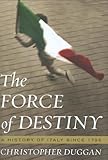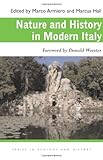|
|
Help |
| Home - Basic I - Italy History (Books) | |
e99 Online Shopping Mall
|
|
Help |
| Home - Basic I - Italy History (Books) | |
| 1-20 of 99 | Next 20 |
click price to see details click image to enlarge click link to go to the store
| 1. The Oxford Illustrated History of Italy (Oxford Illustrated Histories) | |
 | Paperback: 424
Pages
(2001-05-24)
list price: US$31.95 -- used & new: US$19.85 (price subject to change: see help) Asin: 0192854445 Average Customer Review: Canada | United Kingdom | Germany | France | Japan |
|
Editorial Review Product Description Customer Reviews (10)
| |
| 2. A Concise History of Italy (Cambridge Concise Histories) by Christopher Duggan | |
 | Paperback: 338
Pages
(1994-05-27)
list price: US$29.99 -- used & new: US$19.75 (price subject to change: see help) Asin: 0521408482 Average Customer Review: Canada | United Kingdom | Germany | France | Japan |
|
Editorial Review Product Description Customer Reviews (8)
| |
| 3. A History of Contemporary Italy: Society and Politics, 1943-1988 by Paul Ginsborg | |
 | Paperback: 592
Pages
(2003-01-01)
list price: US$26.00 -- used & new: US$12.95 (price subject to change: see help) Asin: 1403961530 Average Customer Review: Canada | United Kingdom | Germany | France | Japan |
|
Editorial Review Product Description Customer Reviews (3)
| |
| 4. Italy: An Illustrated History (Illustrated Histories) by Joseph F. Privitera | |
 | Hardcover: 142
Pages
(2000-10-01)
list price: US$7.48 -- used & new: US$7.45 (price subject to change: see help) Asin: 0781808197 Canada | United Kingdom | Germany | France | Japan |
|
Editorial Review Product Description | |
| 5. Pomodoro!: A History of the Tomato in Italy (Arts and Traditions of the Table: Perspectives on Culinary History) by David Gentilcore | |
 | Hardcover: 272
Pages
(2010-05-25)
list price: US$26.95 -- used & new: US$14.77 (price subject to change: see help) Asin: 023115206X Canada | United Kingdom | Germany | France | Japan |
|
Editorial Review Product Description | |
| 6. Between Salt Water and Holy Water: A History of Southern Italy by Tommaso Astarita | |
 | Paperback: 352
Pages
(2006-07-17)
list price: US$22.95 -- used & new: US$15.26 (price subject to change: see help) Asin: 0393328678 Average Customer Review: Canada | United Kingdom | Germany | France | Japan |
|
Editorial Review Product Description Customer Reviews (8)
| |
| 7. A Traveller's History of Italy (Traveller's Histories Series) by Valerio Lintner | |
 | Paperback: 291
Pages
(2008-12)
list price: US$14.95 -- used & new: US$8.93 (price subject to change: see help) Asin: 1566565219 Average Customer Review: Canada | United Kingdom | Germany | France | Japan |
|
Editorial Review Product Description All the major periods of Italian history are dealt with, including the Etruscans, the Romans, the communes and the city states which spawned the glories of the Renaissance, right up to modern times. For travellers on the ground or students at their desks, this handy paperback will prove invaluable. Customer Reviews (2)
| |
| 8. The Force of Destiny: A History of Italy Since 1796 by Christopher Duggan | |
 | Hardcover: 688
Pages
(2008-04-28)
list price: US$30.00 -- used & new: US$16.02 (price subject to change: see help) Asin: 0618353674 Average Customer Review: Canada | United Kingdom | Germany | France | Japan |
|
Editorial Review Product Description Customer Reviews (6)
| |
| 9. Nature and History in Modern Italy (Ecology & History) | |
 | Paperback: 360
Pages
(2010-08-31)
list price: US$30.00 -- used & new: US$21.60 (price subject to change: see help) Asin: 0821419161 Canada | United Kingdom | Germany | France | Japan |
|
Editorial Review Product Description | |
| 10. The Complete Idiot's Guide to Italian History and Culture by Gabrielle Ann Euvino | |
 | Paperback: 408
Pages
(2001-10-01)
list price: US$18.95 -- used & new: US$6.81 (price subject to change: see help) Asin: 0028642341 Average Customer Review: Canada | United Kingdom | Germany | France | Japan |
|
Editorial Review Product Description Customer Reviews (18)
| |
| 11. The history of Italy by John Adams, Francesco Guicciardini | |
 | Paperback: 472
Pages
(2010-05-13)
list price: US$37.75 -- used & new: US$21.37 (price subject to change: see help) Asin: 1149406216 Average Customer Review: Canada | United Kingdom | Germany | France | Japan |
|
Editorial Review Product Description Customer Reviews (3)
| |
| 12. Modern Italy: A Political History by Denis Mack Smith | |
 | Hardcover: 522
Pages
(1997-12-01)
list price: US$60.00 -- used & new: US$22.57 (price subject to change: see help) Asin: 0472108956 Average Customer Review: Canada | United Kingdom | Germany | France | Japan |
|
Editorial Review Product Description Customer Reviews (3)
Unfortunatly I think Mr. SMith underestimates the great Italian politicians like Craxi and Mussulini and Crispi, the many faces of Italian politics, he makes fun of Italys military adventures(against the Ethiopians, Austrians, Americans, and Libyans among others).It is unfair to pretend that Italy was totally incompetant when in fact it played a major role in this centuries many wars.
| |
| 13. History of Modern Italy: Documents, Readings and Commentary by Shepard B. Clough, S. Saladino, Shepard Bancroft Clough, Salvatore Saladino | |
| Hardcover: 668
Pages
(1969-01)
list price: US$17.50 Isbn: 0231028369 Canada | United Kingdom | Germany | France | Japan | |
| 14. Rome and Italy: Books VI-X of the History of Rome from its Foundation (Penguin Classics) (Bks.6-10) by Titus Livy | |
 | Paperback: 384
Pages
(1982-08-26)
list price: US$16.00 -- used & new: US$5.00 (price subject to change: see help) Asin: 0140443886 Average Customer Review: Canada | United Kingdom | Germany | France | Japan |
|
Editorial Review Product Description Customer Reviews (6)
One of the benefits to being interested in ancient Rome in particular is that the Romans were such a literate people, and so taken with their own perceived greatness, that they wrote a great deal, and much of this writing has survived down to our own times.Not only does this provide an invaluable window onto the remote past, it also makes for good reading.Livy (and a number of other Roman era authors) can sound remarkably modern in their sentiments, and even casual readers should be pleasantly surprised by the vigor and readability of Livy's prose. ... Read more | |
| 15. Italy: History and Landscape by Eugen Beer | |
 | Hardcover: 399
Pages
(2010-08)
list price: US$25.00 -- used & new: US$12.01 (price subject to change: see help) Asin: 0760783721 Canada | United Kingdom | Germany | France | Japan |
|
Editorial Review Product Description | |
| 16. Architecture in Italy, 1400-1500 (The Yale University Press Pelican History of Art) by Ludwig H. Heydenreich | |
 | Paperback: 196
Pages
(1996-02-21)
list price: US$35.00 -- used & new: US$19.95 (price subject to change: see help) Asin: 0300064675 Average Customer Review: Canada | United Kingdom | Germany | France | Japan |
|
Editorial Review Product Description Customer Reviews (1)
On a somewhat different note, the binding of the paperback Pelican books is shoddy at best. By the time I had finished this book, which I did read cover to cover despite really disliking it (it's only 151 pages anyway), all of its pages were falling out! ... Read more | |
| 17. A History of Italy (Palgrave Essential Histories) by Claudia Baldoli | |
 | Paperback: 256
Pages
(2009-12-15)
list price: US$26.95 -- used & new: US$22.95 (price subject to change: see help) Asin: 1403986169 Canada | United Kingdom | Germany | France | Japan |
|
Editorial Review Product Description | |
| 18. Economic History of Modern Italy by Shepard B. Clough | |
| Hardcover:
Pages
(1964-12)
list price: US$15.00 Isbn: 0231026358 Canada | United Kingdom | Germany | France | Japan | |
| 19. Architecture in Italy, 1500-1600 (The Yale University Press Pelican History of Art) by Wolfgang Lotz | |
 | Paperback: 214
Pages
(1995-11-29)
list price: US$40.00 -- used & new: US$29.97 (price subject to change: see help) Asin: 0300064691 Average Customer Review: Canada | United Kingdom | Germany | France | Japan |
|
Editorial Review Product Description Customer Reviews (1)
| |
| 20. A History of Venice by John Julius Norwich | |
 | Paperback: 736
Pages
(1989-06-18)
list price: US$26.00 -- used & new: US$15.00 (price subject to change: see help) Asin: 0679721975 Average Customer Review: Canada | United Kingdom | Germany | France | Japan |
|
Editorial Review Product Description Customer Reviews (46)
| |
| 1-20 of 99 | Next 20 |